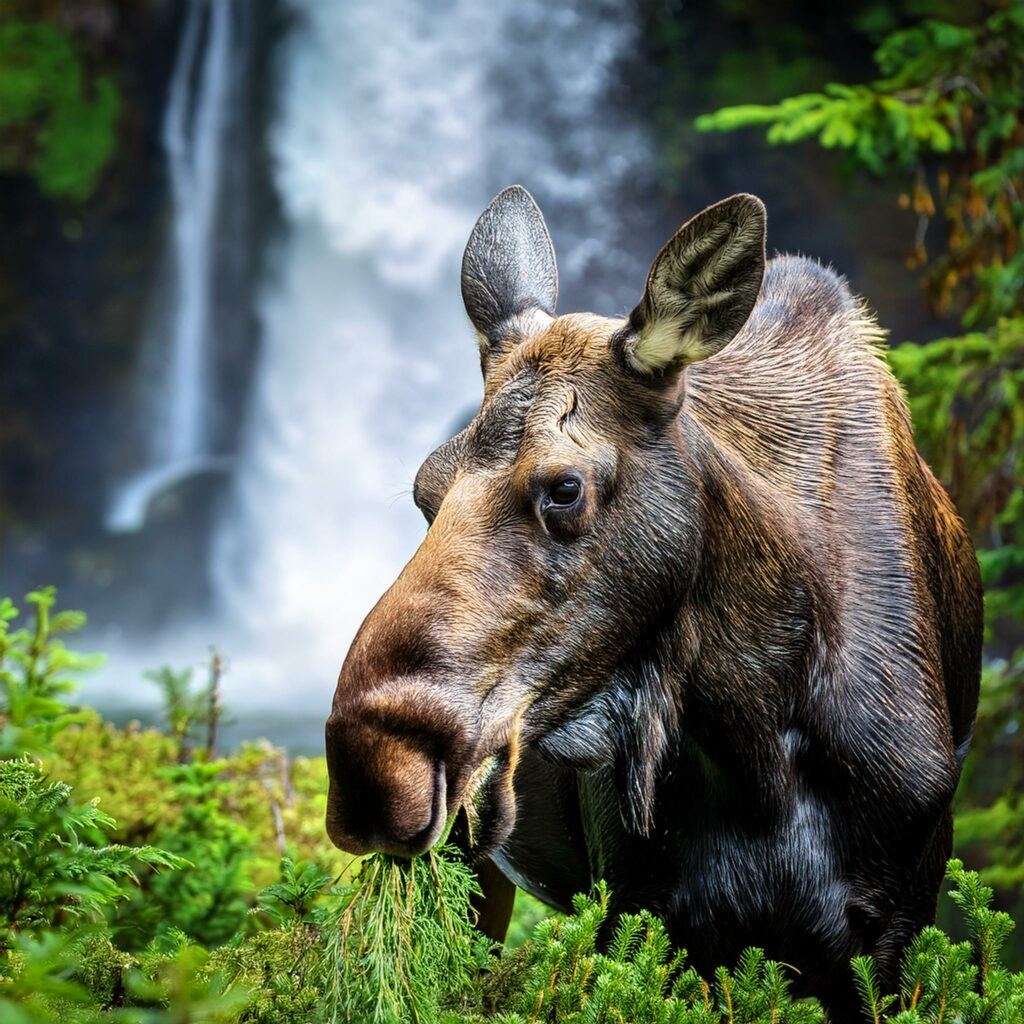Moose are fascinating creatures that roam the forests and wetlands of North America, Europe, and Asia. They are the largest members of the deer family and known for their imposing size and distinctive antlers. Understanding their behavior is key for anyone venturing into their habitats.
Moose prefer areas with a mix of forests and open spaces. These giant herbivores thrive in regions with abundant water sources, as they are excellent swimmers and often feed on aquatic vegetation. You’ll find them in northern regions where winters are harsh, but they are well-adapted to cold environments.
While it may seem like moose wander aimlessly, there’s a method to their movements. They follow established routines, which makes predicting their behavior a bit easier if you know what to look for. Recognizing feeding grounds, travel routes, and resting spots can give you insights into their daily lives.
Why is knowing all this important? For starters, understanding moose behavior helps in avoiding potentially dangerous encounters. Moose can be unpredictable and aggressive, especially during mating season or when a mother is protecting her young. Being informed means being prepared, ensuring both your safety and the moose’s well-being.
Beyond personal safety, understanding these majestic animals provides a deeper appreciation for their role in the ecosystem. Moose are vital to their habitats; they help shape the vegetation and provide food for predators like bears and wolves. By observing and respecting moose, we contribute to preserving the natural cycles of wilderness areas.
Daily Activities and Feeding Habits
Moose lead active lives filled with foraging, resting, and socializing. They are crepuscular, meaning they are most active during the early morning and evening hours. If you’re out in moose territory, these are the prime times to spot them going about their routines.

A moose’s diet is diverse and changes with the seasons. During spring and summer, they munch on a variety of plants, including leaves, twigs, and aquatic vegetation. They’ll even wade into ponds and lakes to feast on underwater plants. In the autumn, they shift to browsing on shrubs and trees, gobbling up bark and twigs to prepare for the leaner winter months. Wintertime dining is tougher, limited to woody plants and whatever they can dig out from under the snow.
Understanding these feeding habits can help you locate moose in the wild. Look for signs like stripped bark, tramped vegetation, and droppings. These can be clues that moose are nearby. It’s also smart to carry binoculars for spotting them from a safe distance. Moose need ample space to feel comfortable, and observing them from afar helps avoid startling them.
Moose have distinct daily routines. They often rest during the heat of the day in cool, shaded areas. While resting, they ruminate—that means they chew their cud to aid digestion. If you come across a moose lying down, give it plenty of space to prevent any stress or agitation.
Respecting these routines and habitats is key to safely coexisting with moose. Always stay alert and be aware of your surroundings. Give them the right of way on trails, and never approach calves. Mothers are extremely protective and will not hesitate to defend their young. Remember, a calm and respectful approach ensures a positive experience for both you and the moose.
Social Structures and Communication
Moose may appear solitary, but they have intricate social structures, especially during certain times of the year. During the mating season, also known as the rut, moose become more social and competitive. Bulls (male moose) compete for the attention of cows (female moose) by engaging in displays of strength and vocalizations. It’s not uncommon to witness bulls clashing antlers in a dramatic show of dominance.
Outside of the mating season, moose are typically solitary animals. However, mothers, or cows, and their calves form tight-knit groups. Calves stay with their mothers for about a year before venturing out on their own. This bond is essential for the calf’s survival, providing protection and teaching necessary survival skills.
Communication among moose is subtle but fascinating. They use a combination of vocalizations, body language, and chemical signals to convey messages. Bulls, especially during the rut, emit deep grunts to establish territory and attract cows. Cows, on the other hand, may use higher-pitched calls to communicate with their calves. Body language is equally important; watch for cues like raised hackles or flattened ears which can indicate aggression or discomfort.
Moose also rely on scent to communicate, especially during the rut. Bulls create ‘rut pits’ by urinating in a scraped-out area and then rolling in it, spreading their scent to attract cows and ward off other bulls. These behaviors are vital for understanding the complex social dynamics within moose populations.
When observing moose, understanding these behaviors can deepen your appreciation and enhance your safety. Keep a respectful distance and use binoculars or a telephoto lens. Aggressive behaviors, such as pawing the ground or laid-back ears, signal that you are too close. Back away slowly and give the animal plenty of space. Knowing these signs ensures peaceful coexistence and a richer wildlife experience.
Safety Tips and Conservation Efforts
When it comes to observing moose in the wild, safety should be your top priority. These majestic animals, despite their often calm demeanor, can be unpredictable. Knowing how to safely interact with them ensures not only your well-being but also that of the moose.
Always maintain a safe distance from moose. A good rule of thumb is to stay at least 100 feet away. If you’re using binoculars or a camera with a zoom lens, you can observe them closely without intruding on their space. If you find yourself closer than this, back away slowly and avoid sudden movements. Never try to feed or approach a moose, especially if calves are present.

Recognizing signs of aggression can help you avoid dangerous situations. Elevated hackles, pinned-back ears, and a lowered head can indicate that a moose is feeling threatened. If you spot these signs, it’s time to give the moose more space. Turning your back and running can provoke a charge, so always move calmly and steadily.
(Not that kind of a charge….sorry…I couldn’t resist. Of course, this could be dangerous too!)
Moose play a critical role in their ecosystems, which makes conservation efforts essential. They help maintain the balance of plant life and provide food for predators. Unfortunately, moose populations face threats from habitat loss, climate change, and diseases like chronic wasting disease (CWD).
Conservation efforts focus on habitat protection, scientific research, and public education. Supporting organizations that work to preserve moose habitats can make a significant difference. Awareness and respect for these conservation initiatives help ensure that future generations can continue to enjoy and learn from moose in their natural environments.
By combining respect for these animals with an understanding of their behavior, we can safely share the wilderness with them. Stay informed, stay respectful, and enjoy the beauty of observing moose in their natural habitat.





